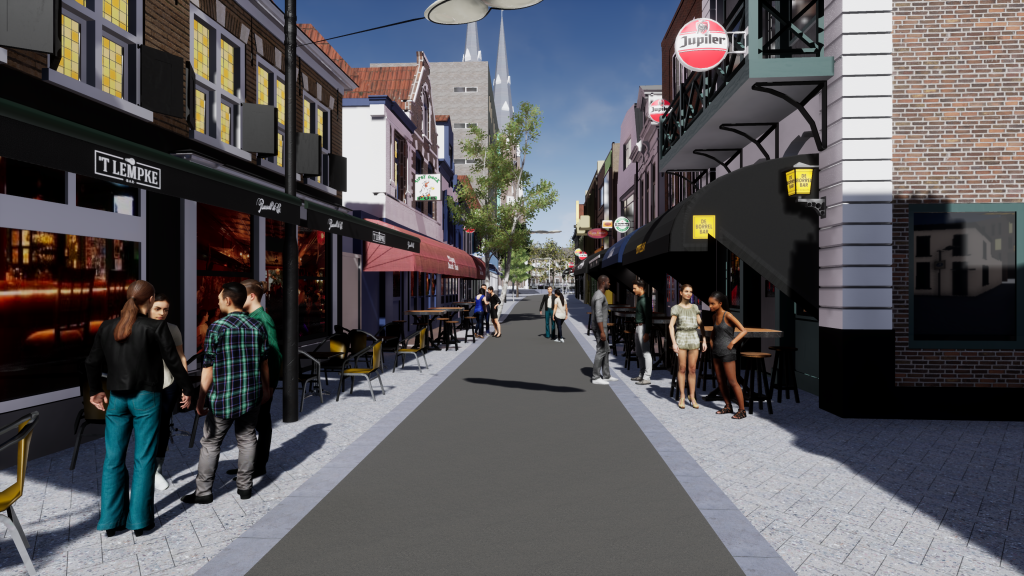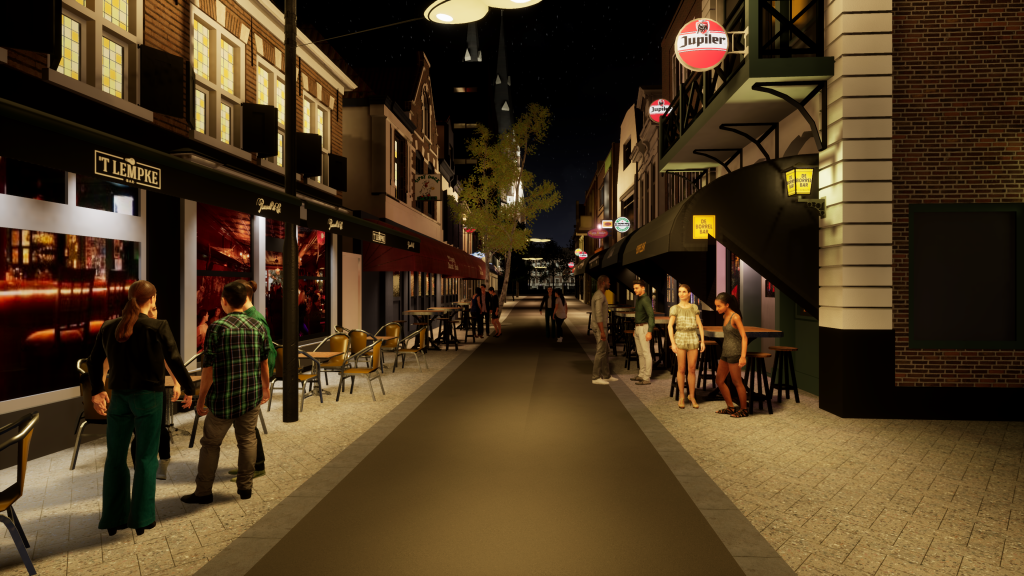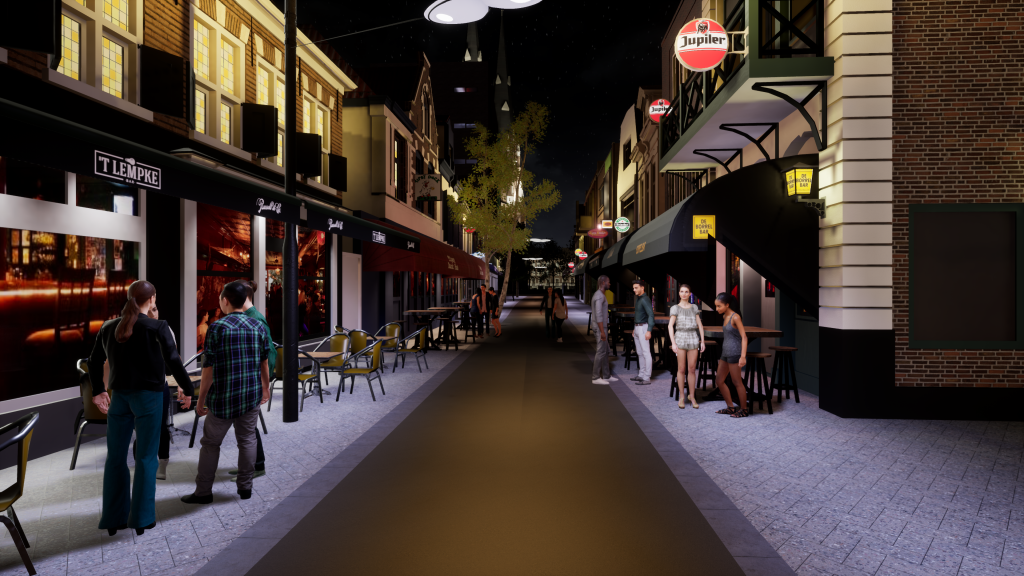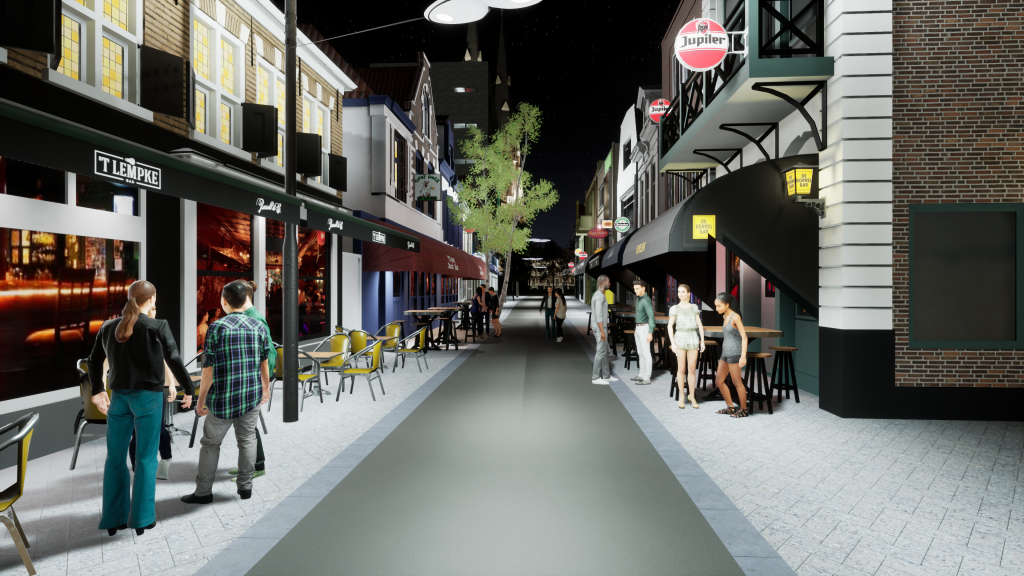What is scenario lighting and why should we focus on it?
In a rapidly changing world, in which our social structures, public values and our behaviours are increasingly determined by (big) data, nothing is as predictable as it once was.
This makes it much more difficult to understand what the future holds. We simply lack the relative certainty we always had about the assumptions we make. Our traditional way of urban planning is therefore no longer sufficient to generate stable answers for the future. Are we able to continue to anticipate unexpected changes that follow each other faster and faster? Difficult question. And can we respond to this new reality with our lighting plans and designs? Probably yes.
Light is literally an elusive building block of our daily living environment, a quality that is more important than ever. Light can be there without major physical interventions or permanent damage to the built environment. That is why light is an ideal material to play with. That is, if we dare to use the possibilities of smart lighting optimally.
Yet we still design and install public lighting in a predominantly classical, static way. Even after the arrival of LED and the possibility to easily make infinite colors in RGBW-LED lighting, the focus in public space remains mainly on ’50 shades of’ white light. We assume that the possibilities of making good, healthy lighting will increase enormously if we add color to the daily use of public lighting. As with natural daylight, which changes during the day, public lighting can also change color over time. This is good for us and all other organisms that live in the city and the interaction between them: our natural ecosystem. And unlike daylight, public lighting can also adapt to what is happening in a place at our request. Suitable light for every moment.

Scenario lighting enables us to respond better to the changing use of public space without pretending to be able to predict this or to influence public space very drastically through light. With scenario lighting, we are better able to respond adequately to a (rapidly) changing use of public space. It also enables us to easily and cost-consciously investigate possible future forms of urban lighting that have a more positive influence on people, places or situations, and our ecosystem, regardless of how urban planning unfolds.

The principle of scenario lighting is chameleonic; always prepared for multiple conditions. This innovative advantage has inspired Eindhoven politicians to want to work on scenario lighting. From 2024, the innovative Intelligent Lighting System Eindhoven (ILSE) will be installed in the city center, which starts with five different light scenarios: shopping, dining, going out, living, calamities. In this way, every moment of the day gets its own matching light image: A subtle colored light image that is painted with light, as
it were.

Since the 17th century, Dutch painters have developed into masters of landscape painting. A tradition we are proud of, and which can now also be continued in an innovative way with lifelike light paintings that move with daily life in public space.

Good to know
Contracting authority: City of Eindhoven
Project: Redevelopment of the city center, phase 1
Objective: Smart Lighting in optima forma
Innovation: Intelligent Lighting System Eindhoven (ILSE)
Concept & Design: Het Lux Lab (Het Lux Lab | lichtontwerp)
Name of Luminaire: Pebble
Exact location: Stratumseind & Rechtestraat
Design & construction: 2020 – 2022
Execution ILSE: 2024 onwards
Similar contents to download here!
Article by City of Eindhoven
Illustrations: ©Het Lux Lab, City of Eindhoven, Stratumseind

